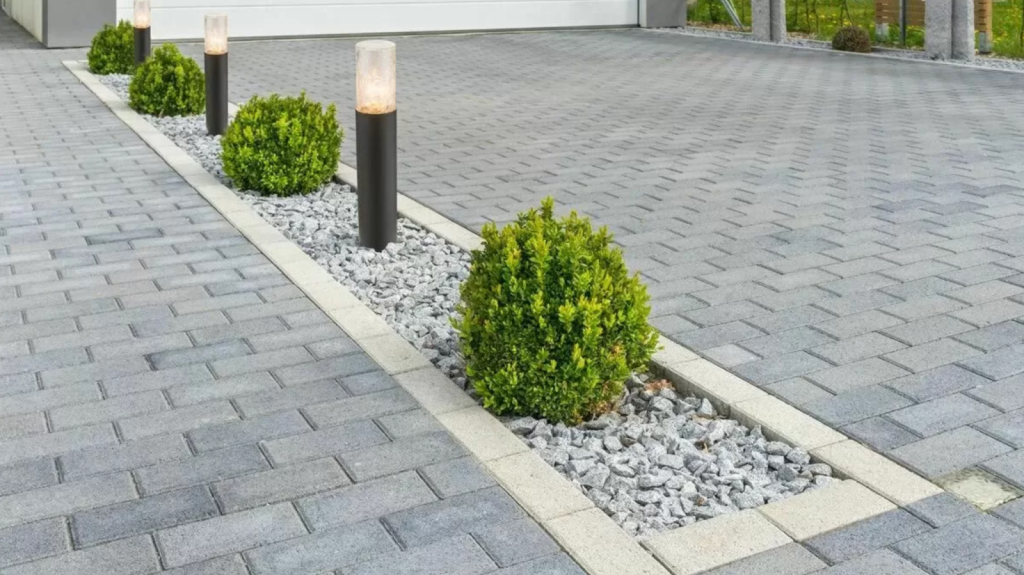Every country homeowner knows: the path leading to the porch is the first thing a guest sees. Driveways and sidewalks become a frame for the home, setting the tone for the entire property and significantly shaping the owners’ impressions. Today, paving is no longer simply a utilitarian task: it has become a design element capable of emphasizing individuality, creating a sense of comfort, and even increasing the value of a property. Modern technologies allow for the selection of materials and shapes that harmonize with the building’s architecture and landscape. Increasingly, owners are choosing interlocking driveway tiles, as they not only look stylish but also provide high strength and stability, preventing subsidence in individual sections even with heavy use.

The secret to strength starts with the foundation
No beautiful project will last without a properly prepared foundation. Professionals begin with surveying, assessing the terrain and groundwater levels, and planning drainage to prevent waterlogging after rainfall. Next, a multi-layered bed of crushed stone and sand is laid, carefully compacted with a vibrating plate. This stage is the foundation of the future path: its quality determines whether the surface will remain level years from now or whether it will suffer from settling and warping.
Particular attention is paid to slopes: they must be designed to allow water to flow freely without forming puddles. A properly designed slope ensures not only durability but also safety—such a path will be less prone to icing in winter.
Choice of materials: from classic to modern solutions
The world of paving is more diverse than ever today. Brick, concrete tiles, natural stone, porcelain tiles—each material has its own unique character. Brick is perfect for lovers of classic styles, creating the feel of an old estate and looking especially striking with wooden facades. Concrete slabs offer limitless possibilities for playing with shapes and colors, allowing you to create both strict geometric patterns and original designs. Natural stone lends a sense of dignity to a property and blends harmoniously into the landscape, especially if there’s plenty of greenery around.
The color of the paving also plays a key role: light shades visually expand the space, while dark shades create contrast and highlight the architectural lines of the house. Designers are increasingly combining several shades to add dynamism and depth to the path.
Installation technology: attention to detail
The installation process requires not only skill but also precision. Tiles or stones are laid according to a pre-designed pattern to ensure a perfect pattern and uniform joint thickness. After installation, the surface is compacted with a vibrating plate, and the joints are filled with special sand or a polymer mixture. This prevents the tiles from shifting, weed growth, and moisture penetration into the subfloor.
Professional paver makers often use decorative borders, which not only complete the look but also prevent the paving from spreading. This approach transforms the path into a true architectural element, not just a functional surface.
Coating care: protection and durability
Even a perfectly laid path requires maintenance. In the fall, clear it of leaves, in the winter, remove snow, and in the spring, pressure wash it to remove dirt and dust. Every few years, it’s recommended to renew the seams and apply a protective sealant to prevent fading and moisture penetration.
The paver driveway maintenance is especially important, as regular preventative maintenance helps avoid costly repairs. Maintaining the correct sand level in the joints, sealing the surface, and replacing damaged elements help preserve the pavement’s original appearance for years to come. This care acts as a kind of “technical maintenance” for the driveway, extending its lifespan and preserving its attractiveness.
Aesthetics and mood of space
A driveway is not only a functional element but also part of the overall design of the property. It can be simple and minimalist, highlighting the architecture of a modern home, or sophisticated, with smooth lines leading the eye to the front door. Properly chosen lighting transforms it into a striking landscape element: spotlights along the edges create a cozy evening scene, while decorative lanterns add charm.
Bottom line: an investment in comfort and prestige
Paving paths and driveways isn’t a one-time expense, but a long-term investment in the convenience, beauty, and value of your home. A well-designed, high-quality, and regularly maintained path becomes an integral part of the property’s appearance. It welcomes guests, pleases the eye, and serves as a daily reminder that comfort begins at the door.







